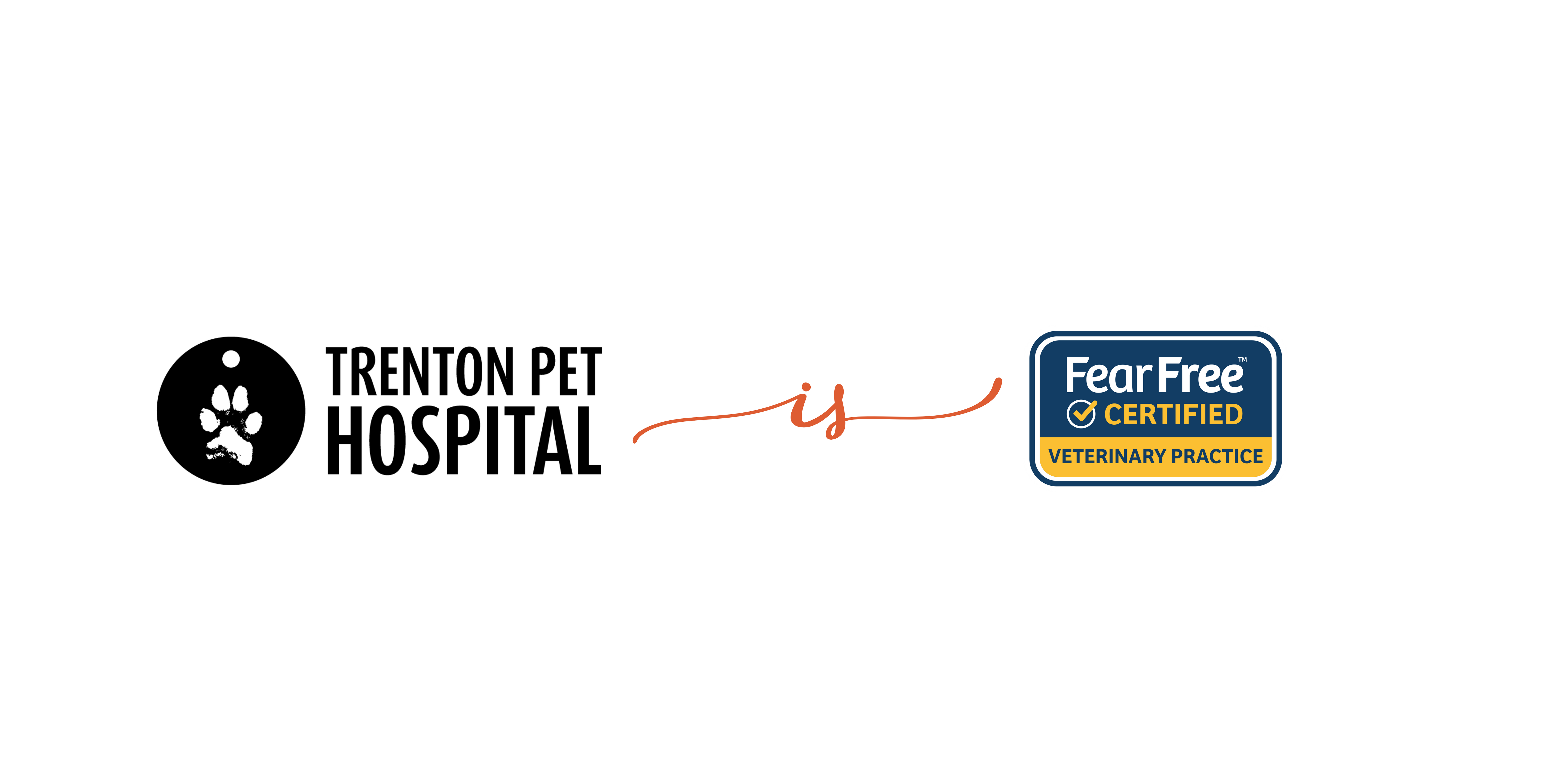Fear Free
At Trenton Pet Hospital, we know that a visit to the veterinarian can be stressful—for pets and their families. That’s why we’ve invested in becoming Fear Free Certified, a distinction that sets us apart as the only veterinary clinic in our community to achieve this certification.
Fear Free Certification means that every member of our team has undergone specialized training in reducing fear, anxiety, and stress in pets during their visit. From the moment you walk through our doors, you’ll notice the difference: calming pheromones in the air, gentle handling techniques, thoughtful scheduling to reduce wait times, and a team that prioritizes your pet’s emotional well-being just as much as their physical health.
What Makes Us Different
- While many clinics say they’re pet-friendly, we’re the only hospital in our region that has committed to the rigorous standards and continuing education required to maintain Fear Free Certification.
- We use treats, toys, and positive reinforcement to make veterinary visits something your pet can look forward to. Our approach not only makes visits calmer but also helps build trust between pets, their families, and our veterinary team.
- When pets are calm, our medical team can perform more accurate exams, take better diagnostic samples, and provide treatments more safely. This means your pet receives higher-quality care in a more compassionate way.
- From our veterinarians to our RVTs to our client service team, everyone plays a role in creating a low-stress environment. You’ll see it in the way we greet your pet, handle procedures, and even design our hospital spaces.
✨ At Trenton Pet Hospital, being Fear Free Certified isn’t just a title—it’s a commitment. We’re proud to lead the way in making veterinary care gentler, safer, and happier for the pets of our community.
Frequestly Asked Questions
Is this Fear Free medication a sedative?
This medication was NOT prescribed to sedate your pet. While some sedation can be a normal side effect, the primary function is to decrease your pet’s fear and anxiety so he/she can have a pleasant, Fear Free experience.
What should I expect?
There are many types of anti-anxiety medications and a wide variety of doses. Individual animals will respond differently to medications. As a result, we can see a range of normal responses from our pets. Once your pet takes this medication, in addition to a decrease in anxiety you may see any of the following: drowsiness, dilated pupils, elevated third eyelids, slow movements, reluctance to move around, wanting to nap, and a slight instability walking (particularly up or down stairs.) Although uncommon, occasionally pets may be more sensitive to these medications, leading to some more noticeable side effects such as substantial drowsiness that may last for several hours, mild urinary incontinence (leaking or accidents), hyperactivity, pacing, whining or agitation.
If present, do not be alarmed! Any side effects should resolve over the course of the day and these medications are extremely safe and used frequently. Please don’t hesitate to call and let us know if you have any questions or concerns about your pet’s response.
My pet seems really sleepy after the first dose. Should I still give him/her the same dose as prescribed for the next morning?
YES! It is normal for your pet to seem very tired/lethargic at home. Once your pet returns to Trenton Pet Hospital, adrenaline may “override” the effects of the PVP’s. Therefore, it is important to give the exact doses at the exact times written on your pet’s prescription label for maximum effectiveness.
How do I know if the medication is going to work?
We recommend doing a “trial run” with the medication at home, to gauge how your pet responds before their next veterinary visit. It is recommended that you give the medication as directed, and see how your pet responds to something that would normally cause him/her stress or anxiety. If your pet still seems anxious, then we may need to increase or adjust the medications before the next veterinary visit.
What if it doesn’t work?
Due to the individual responses and the variety of medications and doses, we do not always get the response we are looking for the first time. In these situations, your veterinary team will discuss with you the next. We will create a plan that works for your pet’s unique needs.
My pet is hard to pill, any advice?
Hide It in Food (the Sneaky Method)
- Use a soft treat designed for pills (e.g., Pill Pockets).
- Hide the pill in a small amount of canned food, cream cheese, peanut butter (xylitol-free!), or liver paste.
- Offer a “decoy” treat first (without the pill), then the one with the pill, followed by another decoy to keep the rhythm going.
Use a Pill Gun (the Direct Approach)
- Place your pet on a non-slip surface.
- Tilt the head back gently, open the mouth, and use a pill popper/pill gun to place the pill at the back of the tongue.
- Quickly close the mouth and gently stroke the throat or blow on the nose to encourage swallowing.
- Reward with praise, treats, or play immediately after.
Keep it Stress-Free
- Pair medication time with something positive (cuddles, brushing, play).
- Don’t chase or wrestle—it builds fear and resistance. Instead, go slow, stay calm, and try to make it feel like part of a normal routine.
💡 Pro Tip for Cats: Wrap your cat in a “purrito” (a towel wrap) to safely control their paws while pilling.
💡 Pro Tip for Dogs: Turn medication time into a game—toss a few treats in a row, and slip the pill-treat in mid-sequence.


